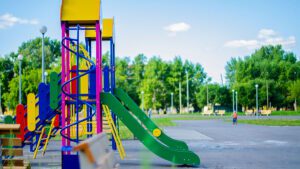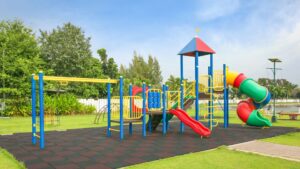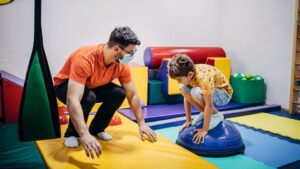Indoor playgrounds have become essential community hubs, offering safe, weatherproof environments where children of all ages can play, learn, and socialize. Well‑designed indoor play areas use a variety of structures to stimulate imagination, develop motor skills, and encourage cooperation. In this article, we’ll explore five main types of indoor playground structures, their benefits, and design tips to help you create a dynamic and engaging play space.

1. Climbing Structures
O que são
Climbing structures are modular play systems composed of ladders, rope nets, cargo climbs, and tunnels. They can range from simple single‑level frames to multi‑tiered play forts with overhead bridges and lookout platforms.
Benefícios
- Desenvolvimento da motricidade grossa: Climbing builds upper‑body and core strength as children pull, push, and balance.
- Problem‑Solving: Kids must plan routes and negotiate obstacles, boosting cognitive flexibility.
- Confidence & Risk Assessment: Successfully completing a climb fosters self‑esteem and teaches safe risk‑taking.
Design Tips
- Include varied challenge levels: gentle ramps for toddlers and steeper nets for older kids.
- Provide safe fall zones with impact‑absorbing surfacing such as rubber tiles or engineered wood fiber.
- Integrate colorful panels or themed elements (jungle vines, pirate rigging) to spark imagination.

2. Soft Play Structures
O que são
Soft‑play zones use cushioned foam components—blocks, tunnels, slides, and ball pits—covered in durable, vinyl slipcovers. Ideal for toddlers and preschoolers, these areas prioritize safety and sensory exploration.
Benefícios
- Safe Exploration: Padded surfaces minimize injury risk for beginners still honing motor skills.
- Tactile Engagement: Soft textures invite crawling, rolling, and low‑impact climbing.
- Jogo social: Enclosed layouts encourage cooperative play and group games.
Design Tips
- Create age‐segmented areas with low walls to keep younger children separate from more active play.
- Incorporate transparent windows in foam walls so caregivers can monitor all activity.
- Add themed soft obstacles—like foam “mushrooms” or “boulders”—to enliven the space.
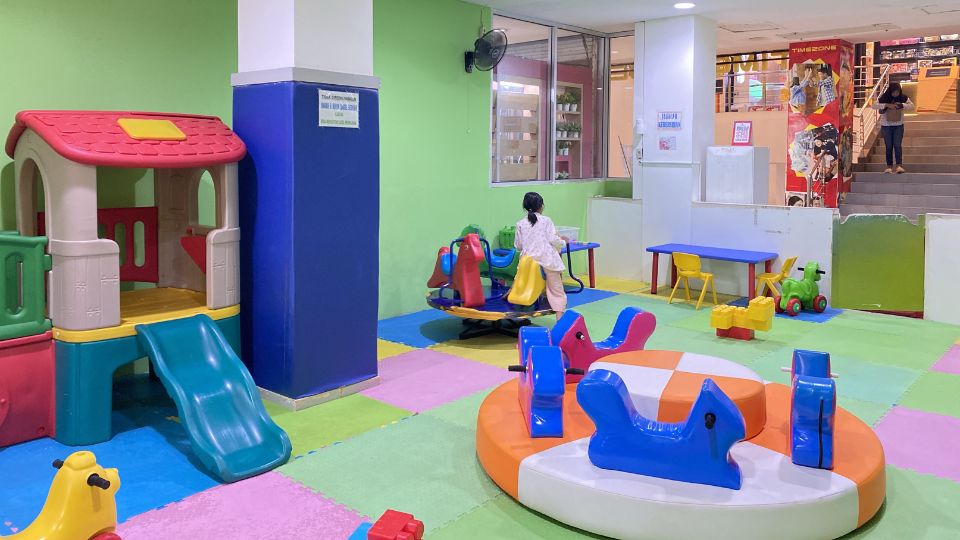
3. Sensory Structures
O que são
Sensory structures engage the five senses and support children with sensory processing needs. Typical features include tactile panels, mirror walls, light tunnels, and musical play stations.
Benefícios
- Integração sensorial: Multi‑sensory input helps children regulate their responses to touch, sound, and light.
- Calming Zones: Quiet sensory corners with soft lighting and gentle textures offer retreats for overstimulated kids.
- Inclusive Play: Accommodates children with autism spectrum disorder (ASD), ADHD, and other sensory challenges.
Design Tips
- Balance high‑stimulation areas (drum panels, bubble tubes) with low‑stimulus retreats (fabric‑covered nooks).
- Use adjustable lighting and volume controls to customize sensory levels.
- Ensure all materials are non‑toxic and easy to clean.
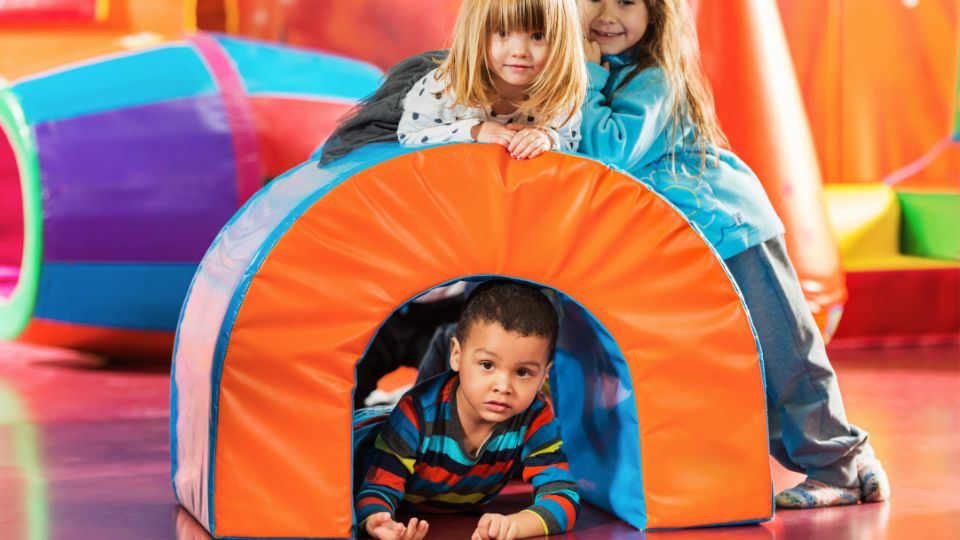
4. Roleplay & Themed Structures
O que são
Roleplay areas mimic real‑world environments—mini kitchens, grocery stores, fire stations, or pirate ships—complete with props, costumes, and scaled‑down furniture.
Benefícios
- Imaginative Development: Children practice language, social roles, and narrative skills.
- Interação social: Cooperative scenarios encourage negotiation, sharing, and empathy.
- Early Literacy & Math: Pretend shopping or restaurant play integrates counting, reading menus, and following recipes.
Design Tips
- Rotate themes or props seasonally to keep play experiences fresh.
- Provide open‑ended materials (dresser full of costume hats, blank “menus”) to encourage creativity.
- Position roleplay zones near educator or caregiver seating for guided storytelling.

5. Interactive Game Structures
O que são
Interactive game installations combine physical play with digital or mechanical challenges. Examples include touch‑sensitive wall panels, motion‑activated floor games, and simple kinetic puzzles.
Benefícios
- Cognitive Engagement: Problem‑solving tasks reinforce memory, sequencing, and logic skills.
- Active Learning: Physical movement (jumping to hit targets, racing through mats) boosts fitness while learning.
- Integração tecnológica: Prepares children for digital literacy with age‑appropriate interfaces.
Design Tips
- Opt for durable, user‑serviceable hardware to minimize downtime.
- Select games with adjustable difficulty to accommodate various age groups.
- Ensure electrical and digital components meet all safety and waterproofing standards.

6. Slide & Tunnel Combos
O que são
Slides and tunnels are classic playground staples. Indoor versions range from short, soft slides for toddlers to long winding tube slides for older children.
Benefícios
- Vestibular Stimulation: Sliding and crawling through tunnels improve balance and spatial awareness.
- Gross Motor Skills: Climbing access ladders and negotiating entry points builds coordination.
- Endless Fun: Universally beloved, slides keep kids engaged for hours.
Design Tips
- Install at varying heights with gentle grades for younger ages and steeper drops for excitement.
- Use clear or mesh tunnel panels so adults can see inside.
- Incorporate themed slide entrances (dragon mouth, rocket launch).
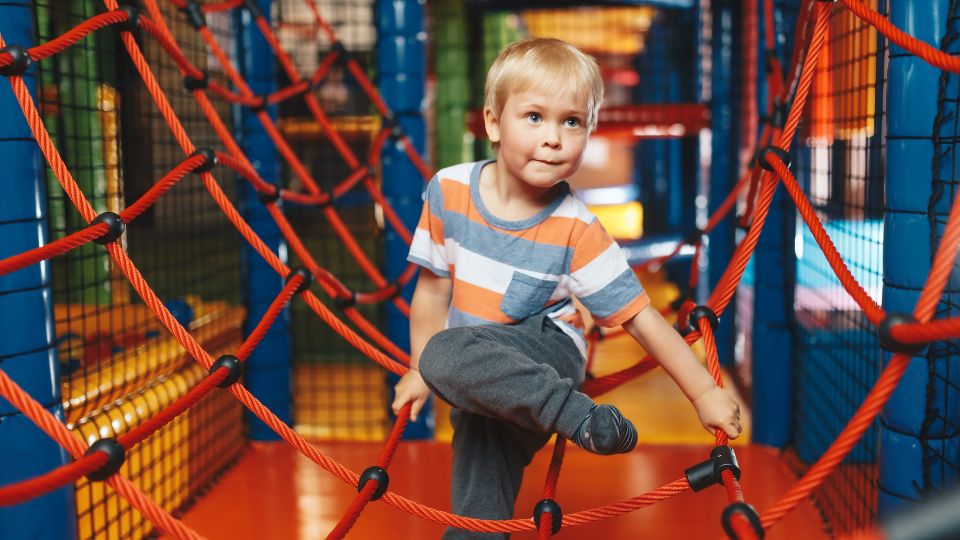
7. Trampoline & Soft‑Jump Areas
O que são
Indoor trampoline sections or foam‑pit jump zones allow kids to bounce safely on mini‑trampolines or into cushioned pits.
Benefícios
- Cardiovascular Fitness: Jumping raises heart rate in a low‑impact way.
- Proprioception & Coordination: Body‑awareness activities refine motor planning.
- Energy Release: Ideal for high‑energy children to channel movement.
Design Tips
- Surround trampolines with safety netting or padded walls.
- Position foam pits under climbing or aerial elements.
- Provide weight and height guidelines to ensure safe use.

8. Musical & Sound Zones
O que são
Musical structures include xylophone panels, drum walls, chime stations, and interactive sound boards.
Benefícios
- Auditory Development: Rhythmic play improves listening skills and beat recognition.
- Creative Expression: Kids explore cause‑and‑effect by creating sounds.
- Inclusive Play: Non‑competitive and accessible for multiple ages and abilities.
Design Tips
- Use weather‑proof, durable metals or plastics for outdoor‑style instruments.
- Mount panels at various heights for toddlers to tweens.
- Combine with seating or quiet zones to balance noise levels.
9. Balance Beams & Obstacle Courses
O que são
Small beams, stepping stones, wobble boards, and low hurdles arranged into mini obstacle courses.
Benefícios
- Core Strength & Agility: Narrow surfaces challenge balance and focus.
- Sequential Planning: Kids learn to plan routes and adapt as they move.
- Jogo em grupo: Race or follow‑the‑leader games promote turn‑taking.
Design Tips
- Provide multiple difficulty levels: wide beams for beginners, narrower ones for advanced.
- Use high‑visibility colors and slip‑resistant surfaces.
- Integrate with climbing or slide elements for circuit‑style play.
10. Sensory Pathways & Tactile Trails
O que são
Floor‑level pathways combining different textures and materials—rubber mats, foam bumps, carpet squares, tactile tiles.
Benefícios
- Sensory Exploration: Barefoot walking or crawling heightens tactile input.
- Fine Motor Engagement: Follow‑the‑line games or edge tracing enhances hand‑eye coordination.
- Mindful Movement: Slow, deliberate navigation fosters body awareness and calm focus.
Design Tips
- Ensure sturdy, antimicrobial flooring materials.
- Offer coloring or shape prompts to gamify the pathway (e.g., “hop on every red circle”).
- Position near quiet or reading nooks for a sensory break.
Conclusão
A well‑rounded indoor playground blends multiple structure types—climbing frames, soft‑play zones, painéis sensoriais, roleplay arease interactive games—to create a rich environment that nurtures physical, cognitive, and social growth. By thoughtfully selecting and arranging these elements, you can design a play space that captivates every child, from energetic climbers to imaginative storytellers and sensory seekers.
Whether you’re outfitting a community center, school, or daycare, remember to:
- Balance Challenge & Safety: Provide options for varied age groups and abilities.
- Prioritize Durability & Hygiene: Choose materials that withstand heavy use and frequent cleaning.
- Foster Inclusion: Incorporate sensory and roleplay zones for children with diverse needs.
With these guidelines and the right mix of indoor playground structures, you’ll offer a dynamic, supportive play environment where every child can play, learn, and grow—rain or shine.

